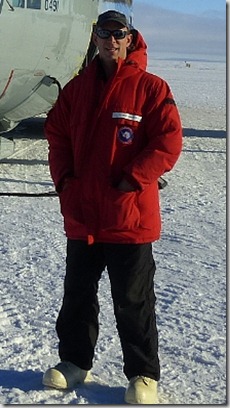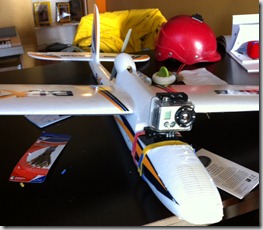 Months of anticipation were finally satiated by our arrival in Antarctica last night! Following numerous flight delays to our previously scheduled December 28th departure due to foggy conditions in McMurdo, we were finally manifested on an LC130 instead of the C17 and the wheels left the tarmac at 1:23pm bound for the Great White South. The propeller-driven LC130 is significantly smaller than the jet powered C17 and is fitted with skis in order to simplify landing conditions on the Ross Ice Shelf near McMurdo, but with a resultant increase in noise and a longer duration flight. None of that mattered to me though; I was on an adventure and completely relished every aspect of the journey.
Months of anticipation were finally satiated by our arrival in Antarctica last night! Following numerous flight delays to our previously scheduled December 28th departure due to foggy conditions in McMurdo, we were finally manifested on an LC130 instead of the C17 and the wheels left the tarmac at 1:23pm bound for the Great White South. The propeller-driven LC130 is significantly smaller than the jet powered C17 and is fitted with skis in order to simplify landing conditions on the Ross Ice Shelf near McMurdo, but with a resultant increase in noise and a longer duration flight. None of that mattered to me though; I was on an adventure and completely relished every aspect of the journey.
The two dozen passengers sat in jump seats along the inside walls of the plane’s fuselage which in combination with our extreme weather clothing (ECW) heightened the sense that we were embarking on a mission of utmost importance. We floated through the skies in the giant leviathan with roaring engines too loud for even a single conversation. The surreal experience eventually gave way to the realization that we were over the continent and closing in on our destination. Shoulders were pressed side by side as we busily fired off photographs of the fractaled ice below through the tiny port hole windows, and we even occasionally had the privilege of joining the pilots in the cockpit for a few minutes of 180 degree panoramic scenery. After 7 hours of flight, we were back in our jump seats and without a view of the approaching ground. The sound of flaps and landing gear deploying was accompanied by corresponding changes to airspeed and aircraft orientation, but it was always nervous not being able to see the ground throughout the descent. Finally, the plane touched down and the graceful landing was subtly punctuated by the sound of skis chattering on the snow. We had made it safely to Antarctica!
Minutes later, we had all disembarked and found ourselves standing with our very own feet on the Ross Ice Shelf just off the main continent and Ross Island. We slowly turned in circles trying to absorb the surroundings, but there was simply not enough time, so instead we boarded vehicles that would carry us 50 minutes across the ice to McMurdo. The Delta vehicle was an airport shuttle bred with a monster truck and was typical of the vehicle abnormalities that we were about to see throughout McMurdo. As we were cruising slowly down the flagged ice road, our driver suddenly stopped to give us a chance to meet and greet our welcoming party. Two Adelie penguins trotted along the ice in an uncharacteristic location displaying their adorable waddle/run antics. Without a doubt, we had arrived in Antarctica.



